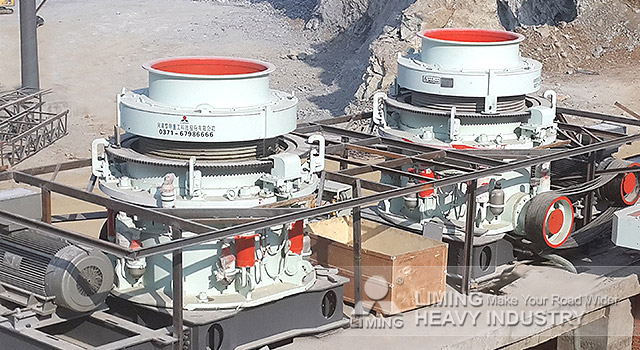A cone crusher is a type of crushing equipment used in the mining and aggregate industries for secondary crushing applications. It is named for its cone-shaped crushing chamber, which consists of a concave and a mantle that rotate eccentrically to compress the material between them. This process effectively breaks down larger rocks into smaller, more manageable sizes.
The primary function of a cone crusher is to reduce the size of the material produced by primary crushers or excavated from the quarry. The material enters the cone crusher through the top, where it is continually fed into the crushing chamber. The rotating mantle gyrates, or moves in an eccentric pattern, causing the rock to be squeezed and crushed between the mantle and the concave.

One of the main advantages of cone crushers is their ability to produce a well-graded product with a narrow size distribution. This is achieved by adjusting the crusher’s setting, which controls the gap between the mantle and concave. By altering this gap, operators can optimize the output size and shape according to specific requirements.
Cone crushers are often used as secondary crushers after jaw crushers or impact crushers in the crushing process. They are particularly suitable for processing hard and abrasive materials, such as granite, basalt, and iron ore. Cone crushers can also be used in the primary stage if the material is relatively soft and not excessively abrasive.
The design of a cone crusher is robust and durable, allowing it to withstand high crushing forces and maintain its performance over time. It typically consists of a steel frame, an eccentric assembly, a crushing chamber, a discharge opening, and a drive motor. The cone crusher’s hydraulic system plays a crucial role in adjusting the crusher’s settings and protecting it against overload conditions.
In addition to its primary function of secondary crushing, cone crushers can also be used for tertiary or quaternary crushing stages. Tertiary crushing refers to the process of further reducing the size of the material after the secondary crushing stage. Quaternary crushing, on the other hand, involves crushing the material to even finer sizes.
Cone crushers are available in various sizes and capacities to accommodate different production requirements. They can be stationary or portable, depending on the application and site conditions. Some cone crushers also come with additional features, such as hydraulic clearing, tramp release systems, and automation, which enhance their operational efficiency and safety.
In conclusion, cone crushers are essential equipment in the mining and aggregate industries for secondary crushing applications. They offer reliable and efficient performance, producing well-graded products with a narrow size distribution. Whether used in primary, secondary, or tertiary crushing stages, cone crushers are versatile machines that contribute to the production of high-quality aggregates.
